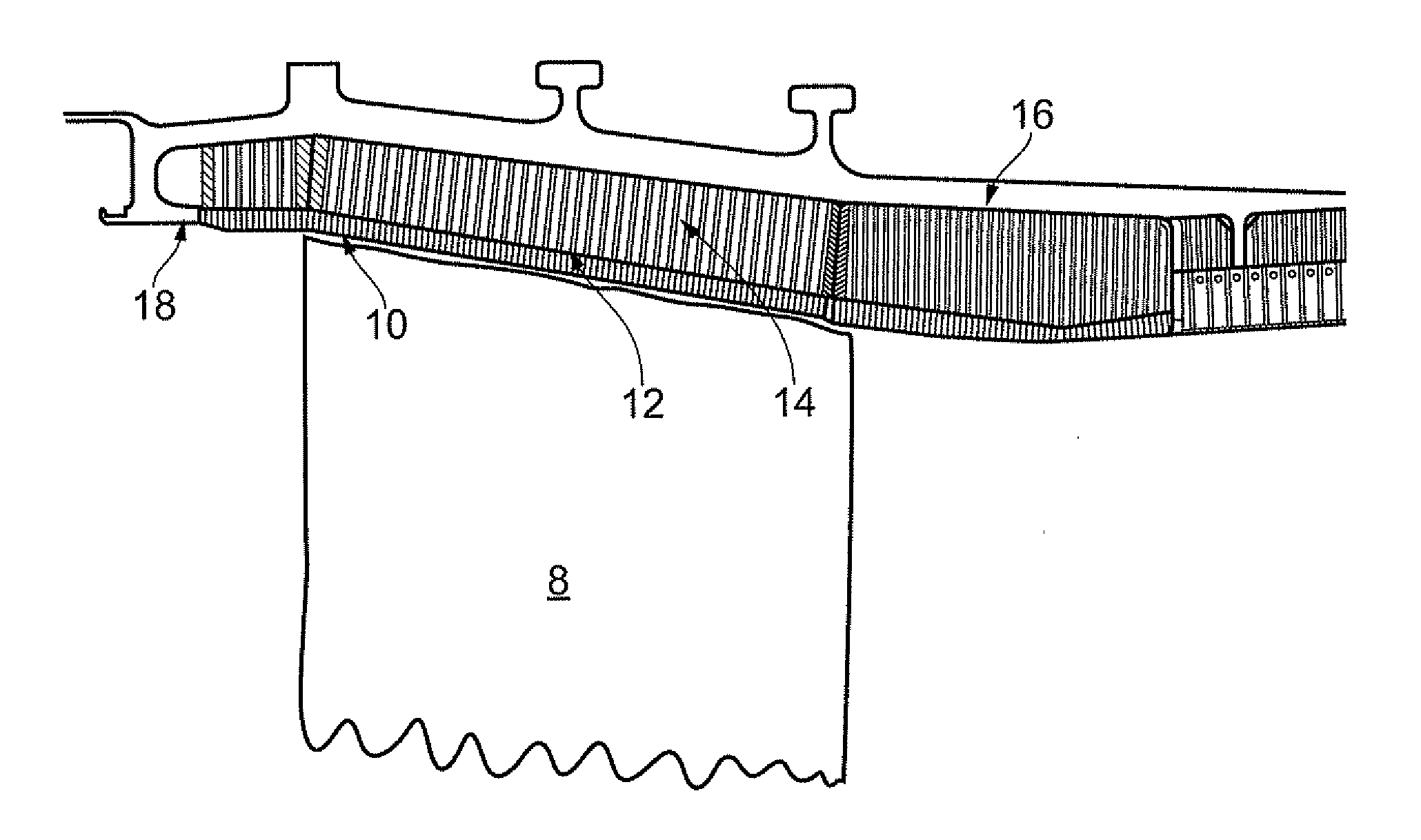Turbomachine casing assembly
a technology for turbines and casings, which is applied in the direction of machines/engines, mechanical devices, liquid fuel engines, etc., can solve the problems of not being able to simply strengthen, not being able to use swept fan blades, and not being strong enough along the forward region, so as to reduce the weight of the assembly, and facilitate the manufacture
- Summary
- Abstract
- Description
- Claims
- Application Information
AI Technical Summary
Benefits of technology
Problems solved by technology
Method used
Image
Examples
first embodiment
[0071]Referring to FIGS. 2 and 3, a fan casing assembly according to the invention is designated generally by the reference numeral 100 and comprises a first casing element 110 and a second casing element 130.
[0072]The first casing element 110 has a first end 112, a second end 114, a radially proximal face 116 and a radially distal face 118, and the second casing element 130 has a first end 132, a second end 134, a radially proximal face 136 and a radially distal face 138.
[0073]The first casing element 110 at least partially encloses one or more rotating aerofoil structures 150. These aerofoil structures 150 may comprise blades of a turbomachine, in particular compressor fan blades. The second casing element 130 is disposed radially distal to the first casing element 110.
[0074]The turbomachine casing assembly 100 comprises a plurality of first casing elements 110 circumferentially disposed about a curve defined by the blade tip path of the one or more aerofoil structures 150 of the ...
second embodiment
[0090]Referring to FIGS. 4 and 5, a fan casing assembly according to the invention is designated generally by the reference numeral 200. Features of the fan casing assembly 200 which correspond to those of fan casing assembly 100 have been given corresponding reference numerals for ease of reference.
[0091]The fan casing assembly 200 has a first casing element 210 and a second casing element 130.
[0092]In this embodiment, the first casing element 210 has a first end 212, a second end 214, a radially proximal face 216 and a radially distal face 218. The radially proximal face 216 comprises an abradable layer 120. The radially distal face 218 of the first casing element 210 corresponds to the radially proximal face 136 of the second casing element 130.
[0093]The radially proximal and distal faces 216,218 of the first casing element 210 are spaced apart from one another with an infill member 256 positioned therebetween.
[0094]A second interface portion 276 in the form of a convex protrusio...
third embodiment
[0098]Referring to FIG. 7, a fan casing assembly according to the invention is designated generally by the reference numeral 300. Features of the fan casing assembly 300 which correspond to those of fan casing assembly 100 have been given corresponding reference numerals for ease of reference.
[0099]The fan casing assembly 300 has a plurality of first casing elements 310 each comprising a first end 312, a second end 314 and a radially proximal face 316. The first casing elements 310 further comprise a first edge 318 and an opposite second edge 320; the first and second edges 318,320 each extending from the first end 312 to the second end 314.
[0100]Each of the first and second edges 318,320 comprises a respective first and second edge step 322,324 located at a mid-portion thereof. Each first edge step 322 on the first edge 318 of a first casing element 310 co-operates with the second edge step 324 on the second edge 320 of the adjoining first casing element 310.
[0101]FIG. 7 shows a pa...
PUM
 Login to View More
Login to View More Abstract
Description
Claims
Application Information
 Login to View More
Login to View More - R&D
- Intellectual Property
- Life Sciences
- Materials
- Tech Scout
- Unparalleled Data Quality
- Higher Quality Content
- 60% Fewer Hallucinations
Browse by: Latest US Patents, China's latest patents, Technical Efficacy Thesaurus, Application Domain, Technology Topic, Popular Technical Reports.
© 2025 PatSnap. All rights reserved.Legal|Privacy policy|Modern Slavery Act Transparency Statement|Sitemap|About US| Contact US: help@patsnap.com



